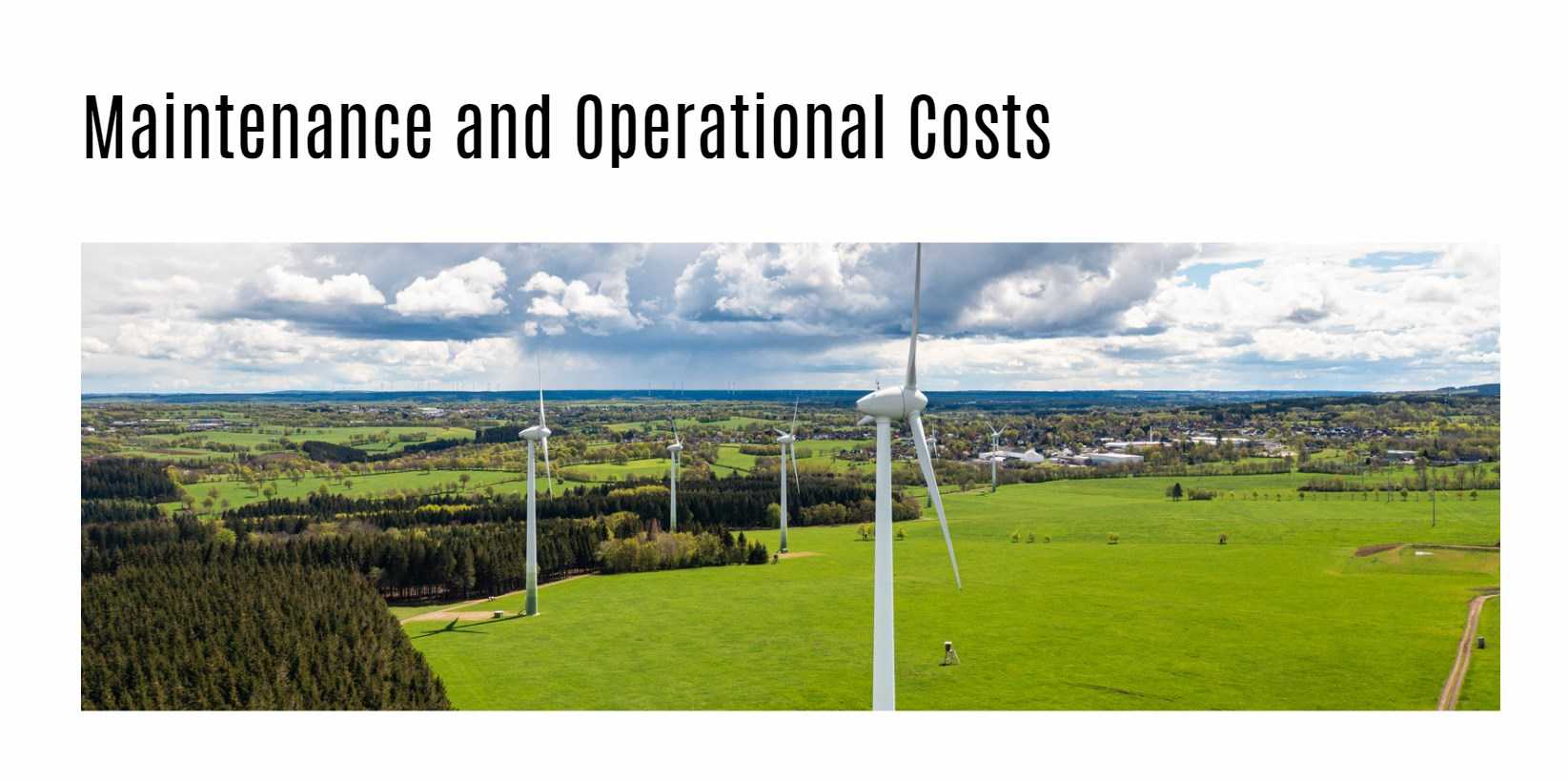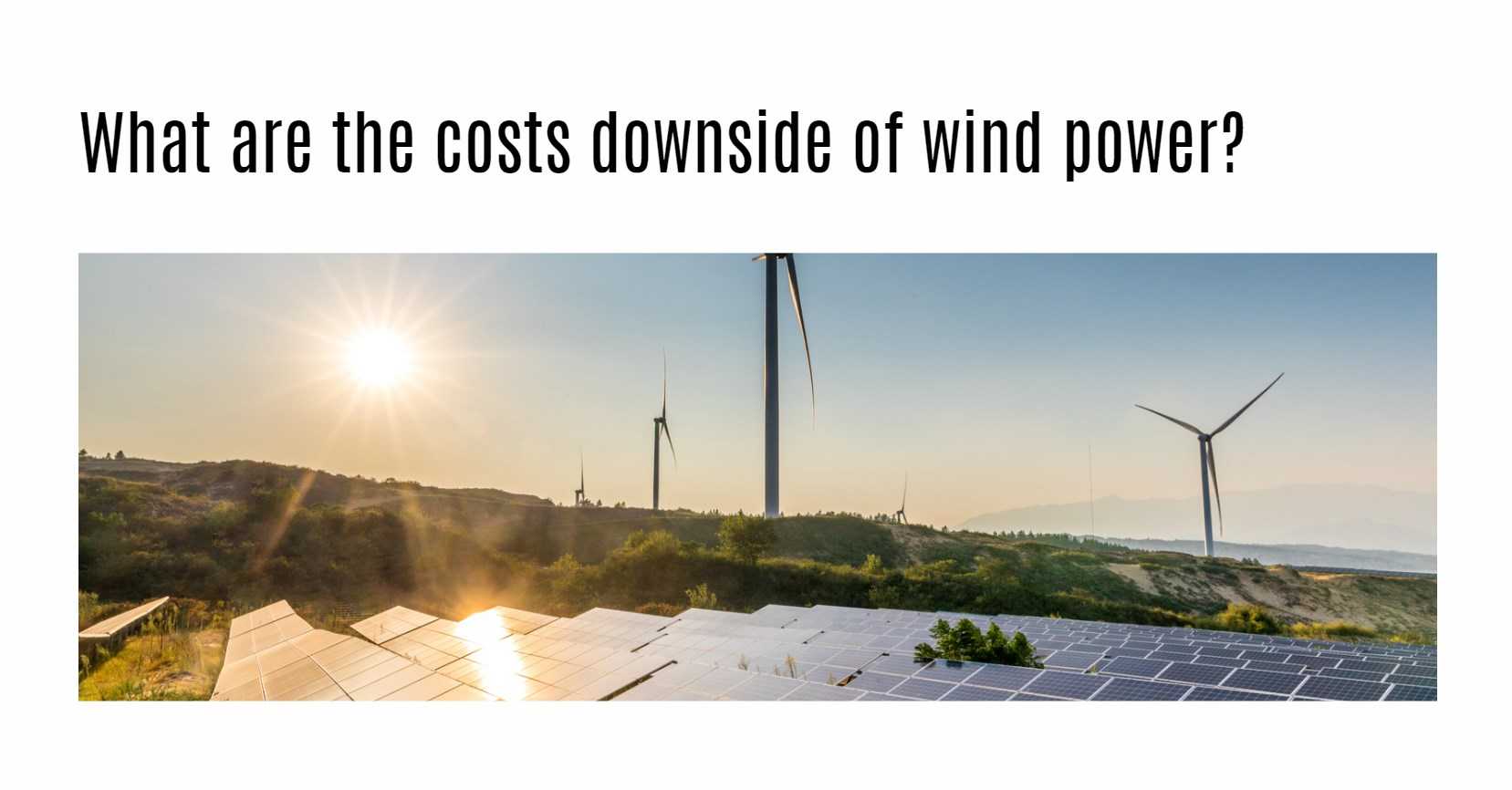Harnessing the power of the wind has long been heralded as a clean and renewable energy source, providing an environmentally-friendly alternative to traditional fossil fuels. Wind power projects have gained momentum globally, promising a sustainable future for generations to come. However, behind the soaring blades and whirring turbines lie costs that are worth examining. Let’s uncover the lesser-known downside of wind power and explore whether its benefits outweigh the financial implications.
The Benefits of Wind Power
Harnessing the power of wind has numerous benefits that make it a popular choice for clean energy production. One key advantage is its renewable nature – wind is an abundant resource that will never run out. By using wind turbines to generate electricity, we can reduce our reliance on finite fossil fuels and help combat climate change.
Another benefit of wind power is its cost-effectiveness in the long run. While initial setup may require a significant investment, operating a wind farm over time can lead to considerable savings compared to traditional energy sources. Additionally, wind power creates jobs in manufacturing, installation, and maintenance sectors.
Furthermore, generating electricity from wind produces zero greenhouse gas emissions or air pollutants that contribute to respiratory illnesses and environmental degradation. This makes it a sustainable alternative to conventional methods of power generation which harm both human health and the planet’s ecosystems.
What are the Costs Associated with Wind Power?
When considering the costs associated with wind power, it’s essential to look beyond just the initial investment. While setting up a wind farm can be expensive, there are also ongoing maintenance and operational costs to take into account. These include regular inspections, repairs, and upgrades to ensure that the turbines are functioning efficiently.
Additionally, there may be potential environmental concerns related to wind power. Some studies suggest that wind farms could have negative impacts on local wildlife populations or disrupt ecosystems. It’s crucial for developers to conduct thorough assessments and mitigation efforts to minimize these risks.
Despite these challenges, many governments offer incentives and subsidies for companies investing in renewable energy sources like wind power. These financial benefits can help offset some of the upfront costs and make projects more financially viable in the long run.
While there are costs associated with implementing wind power projects, the potential long-term benefits in terms of sustainability and reduced carbon emissions make it a worthwhile investment for a greener future.
Initial Investment Costs
When considering wind power as a renewable energy source, one of the significant factors to take into account is the initial investment costs involved. Building a wind farm requires substantial capital for purchasing and installing turbines, constructing infrastructure, and connecting to the grid. The cost per megawatt of installed capacity can vary depending on factors such as location, turbine size, and project scale.
Investing in wind power also involves expenses related to land acquisition, feasibility studies, permits, and legal fees. These upfront costs can add up quickly and impact the overall financial viability of a wind energy project. Additionally, uncertainties in government policies and market conditions can influence the return on investment for developers.
Despite these challenges, advancements in technology have led to lower production costs over time, making wind power more competitive with traditional forms of energy generation. By carefully analyzing the initial investment requirements and long-term benefits of harnessing wind energy, stakeholders can make informed decisions about incorporating this sustainable solution into their energy portfolio.
Maintenance and Operational Costs
Maintaining and operating wind power systems is crucial to ensure their efficiency and longevity. Regular maintenance includes servicing turbine components, checking for wear and tear, and addressing any issues promptly. These tasks require skilled technicians, specialized equipment, and ongoing monitoring to keep the turbines running smoothly.
Operational costs encompass expenses such as insurance, land lease fees, grid connection fees, and administrative overhead. It’s important to budget for these ongoing operational expenses when considering a wind power project. Additionally, factors like weather conditions and location can impact maintenance schedules and costs.
By investing in proper maintenance and operational support, wind power projects can maximize their energy output while minimizing downtime. Proactive management of these costs is key to the success of any wind power initiative in the long run.

Potential Environmental Concerns
When it comes to wind power, there are some potential environmental concerns that need to be taken into consideration. One of the main issues is the impact on wildlife, particularly birds and bats. The spinning blades of wind turbines can pose a risk to these animals if they fly too close.
Another concern is the visual impact of wind farms on landscapes and seascapes. Some people find them unsightly and believe they can disrupt the natural beauty of an area. Additionally, there are concerns about noise pollution from operating wind turbines, which can affect both wildlife and nearby communities.
Furthermore, the manufacturing and transportation of wind turbine components contribute to carbon emissions, albeit at a lower level compared to traditional fossil fuels. It’s important for developers to conduct thorough environmental assessments before constructing wind farms to minimize negative impacts as much as possible.
Government Incentives and Subsidies for Wind Power
Government incentives and subsidies play a significant role in promoting the development of wind power projects. By offering financial support and tax benefits, governments aim to encourage investments in renewable energy sources like wind power. These incentives help offset some of the initial costs associated with setting up wind turbines and infrastructure.
In many countries, there are specific programs designed to incentivize businesses and individuals to adopt clean energy solutions such as wind power. This not only helps reduce greenhouse gas emissions but also creates jobs in the renewable energy sector. Government subsidies can make wind power more competitive with traditional fossil fuel sources, driving its widespread adoption.
By supporting the growth of the wind industry through incentives and subsidies, governments contribute to achieving climate goals and transitioning towards a more sustainable energy future. Encouraging private investment in renewable energy technologies is essential for building a greener economy that relies less on non-renewable resources.
Considerations for Implementing Wind Power Projects
When considering implementing wind power projects, it’s essential to evaluate the location thoroughly. Factors like wind speed, topography, and accessibility can significantly impact the efficiency of the turbines. Conducting a detailed feasibility study is crucial to determine if the area is suitable for harnessing wind energy effectively.
Additionally, obtaining permits and approvals from local authorities is a key consideration in the project implementation process. Compliance with regulations and ensuring community support are vital for smooth project execution. Engaging with stakeholders early on can help address concerns and build positive relationships within the community.
Moreover, assessing grid connection options is necessary to ensure seamless integration of wind power into the existing electrical infrastructure. Adequate transmission capacity and grid stability are fundamental aspects that need careful evaluation during project planning.
Furthermore, establishing a comprehensive maintenance plan is essential to maximize turbine performance and longevity. Regular inspections, repairs, and upkeep are critical considerations to ensure optimal operation of wind power projects over their lifespan.
Conclusion: Is Wind Power Worth the Costs?
In weighing the costs and benefits of wind power, it is clear that while there are initial investment and operational expenses to consider, the long-term advantages far outweigh these drawbacks. The environmental benefits, energy independence, and potential for cost savings make wind power a viable and sustainable option for the future. When considering all factors, including government incentives and subsidies, it becomes evident that investing in wind power is not only worth the costs but also essential for a cleaner and more sustainable world. So next time you see those majestic turbines spinning gracefully in the wind, remember they are not just harnessing energy – they are also paving the way towards a greener tomorrow.




